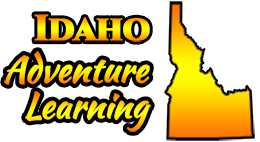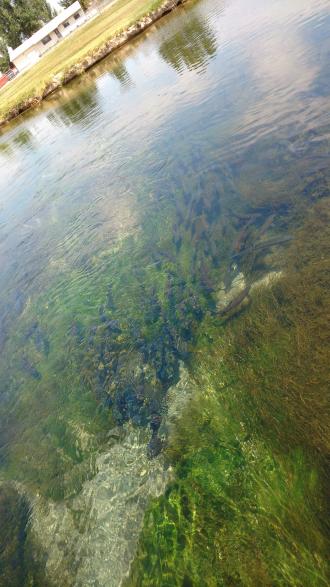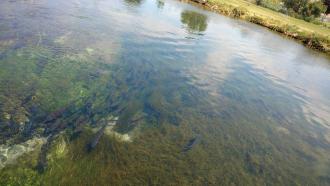Wow! So close but not explored!
Submitted by Stephanie Chamberlin on Fri, 2017-07-14 00:00
Can I just first say what a great week of learning this has been? I have so enjoyed working with Cindy, Sarah, Mary and all of my fellow teachers in this cohort. It has been fantastic, I have learned so much about the resources in our area and the importance of teaching about our socio ecological systems.
Today, I realized the availability of a resources that is litterally about 1 mile from my parents house, I have driven by it many times and not taken the time to explore or realize the great service it does. I am talking about the Nampa Fish hatchery, this would be a great place to bring students to see how the fish they catch gets into the stream they are enjoying. It is open to the public and you can explore how they raise the trout and see the different stages. Then, right across the street is a group of public ponds that they stock and that the public can fish close to home, or you can just walk the trails and watch others fish. I never knew how important the hatchery is for making available fish just for fishing. I thought they were processing them for restock of nature, but instead, these fish are just for the fisherman, indeed these fish are sterile so they do not contribute to future fish production. Since this hatchery is funded primarily by fishing licenses, it is a great motivator for you fishermen to get a licence before fishing. It is also important to note that they only stock those ponds that do not have a strong natural fish population.
So maybe a field trip to the hatchery with a side to the ponds.
What ideas do you have for getting this information to students? To help them understand there are great opportunities out thier often much closer than they thought.



Comments
A Virtual Tour
Hi Stephanie,
Thanks for sharing about this cool topic!
I have driven by that fish hatchery many times, but I've also never taken the time to explore it. I agree that it would be really cool to share this information with students! I teach middle school so I have about 150 students every year- I'm not sure a field trip would be feasible, but I thought a virtual tour would be cool. If there isn't one available already, I think a teacher could create his/her own using something as simple as a phone. The teacher could narrate the video, talk about the various processes taking place at the hatchery and then show it to students.
Dani
Not a bad idea
I REALLY like your idea of creating virtual tours.
Nampa Hatchery, Fish Identification
Since I was digi-learner this week, I did not get to experience all of these great places. However, I did learn alot because I researched different topics that you learned about in class. Today, I looked up the Nampa Hatchery. They are the second largest hatchery in the state. There are 19 hatcheries in the state of Idaho. At the Nampa Hatchery 90% of the fish produced are Rainbow Trout. They also raise Lahontan Cutthroat, Brown Trout, and Chinook Salmon. They are open from 8-4 daily and they give tours!
Fish hatchery and education!
Hi!
As a science teacher I think this would be a great opportunity for students to see socio-ecological processes at work. It is a great way to see how humans and ecosystems are working together. I personally have been to this area and has so much fun! I would love to be able to show much students this area and have them be educated on the wonderful ways in which humans and the environment interact.
Connections to ELA Curriculum
It can be hard as an English teacher to find ways this information connects to the curriculum I teach. I don't want to have students read and write about the topics we've covered this week when there isn't a connection to what we're studying in class.
I have been thinking through the texts we study and the unit themes and have found a few places I think would work well to fit in some information about our local watershed and various socio-ecological systems. In quarter one, my students read a book called Red Kayak by Priscilla Cummings. It's not the central conflict, but the book discusses the crab population in the Chesapeake Bay and how increasing population, overfishing, and increased pollution are all factors that led to the decline of the crab population. Students see the relationship between human activity and an ecological system and also get to see how the relationship between the Bay and the humans is a two-way street. This could be a great opportunity to have students look at our own watershed and think about how human activity in the Treasure Valley has an impact and also a good chance for them to think about how they benefit from the watershed.
One other time during the year that it would make sense to have students look into topics related to our class this week would be during our Struggles and Injustice unit. They have an opportunity to choose and research a modern injustice near the end of the unit, and I will mention environmental damage as a potential topic to explore.